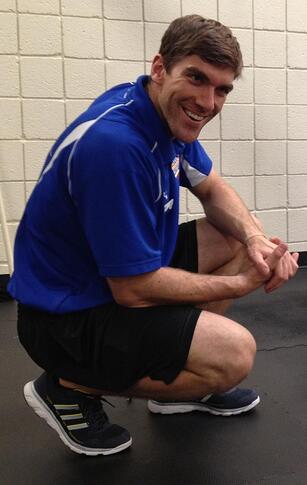Does the Fat Burning Zone really work?
The first step in any program design is to create a balanced program based on the individuals need. One thing I see constantly is the overuse of aerobic methods. While cardiovascular training is good for you and certain populations, I am going to say “STOP the madness!” The thought process goes “well if I am exercising in the fat burning zone and I want to lose fat then I should work in that zone”. Wrong!
The fat-burning zone is really a misinterpretation of what is actually going on. You will actually burn more total fat calories with high intensity methods, even though the percentage of fat burned is less. Cardiovascular exercise has different zones or intensities; the fat burning zone is usually at a lower intensity around 55-65% of your max heart rate. Typically, the lower the intensity is, the more fat you burn as a percentage; you actually burn close to 50-55% of your calories from fat at rest, which is more than any other activity. This can be proven by looking at RER values or Respiratory Exchange Ratios. RER values give an indication of what the primary fuel source (carbohydrate or fat) is during activity. High intensity exercises are methods like interval training, lactate thresholds, sprints, etc. These kinds of sessions incorporate intensities of 80-90% max heart rates and typically burn 25-35% of calories from fat. Without getting into too much math and science lets look at two different exercise sessions for a 150lb female.
1) 30 min Aerobic Exercise at 5 METs (moderate intensity or 60%) burns close to 170 Calories. We are working in the Fat Burning zone, where around 50% of our energy is coming from Fatty Acids. That gives us close to 85 calories of fat burned.
2) 30 min Anaerobic Exercise at 8.5 METs (high intensity or 80%) burns close to 290 Calories. This would be physically harder and could be a run, depending on your level of fitness. Let’s say this activity uses 35% of energy coming from fat instead of 50%. That equates to over 100 calories burned as fat.
By directly looking at these two examples we can see that although you burn a higher percentage of fat at lower intensities, it does not matter because the overall calories burned is going to be lower. Metabolism will also be elevated after the high intensity sessions as well, which means you burn even more calories post exercise. Now you can argue that not many people will do 30 minutes straight of a higher intensity activity, but that is another topic. The key take away here is total calories burned and total fat calories burned are both more during higher intensity activity. To say that you should never do lower intensity exercises would be taking the information out of context, as lower intensity methods have different, albeit very important adaptations to the body. The best way to lose fat and change your body is a proper mixture of Aerobic and Anaerobic activities, and although the fat burning zone may not be the best way to lose fat, it does help burn some calories. Try higher intensity methods and see how they work!
Learn more about Lee Jephson, here
What do you think? Leave your questions and comments in the box below.











